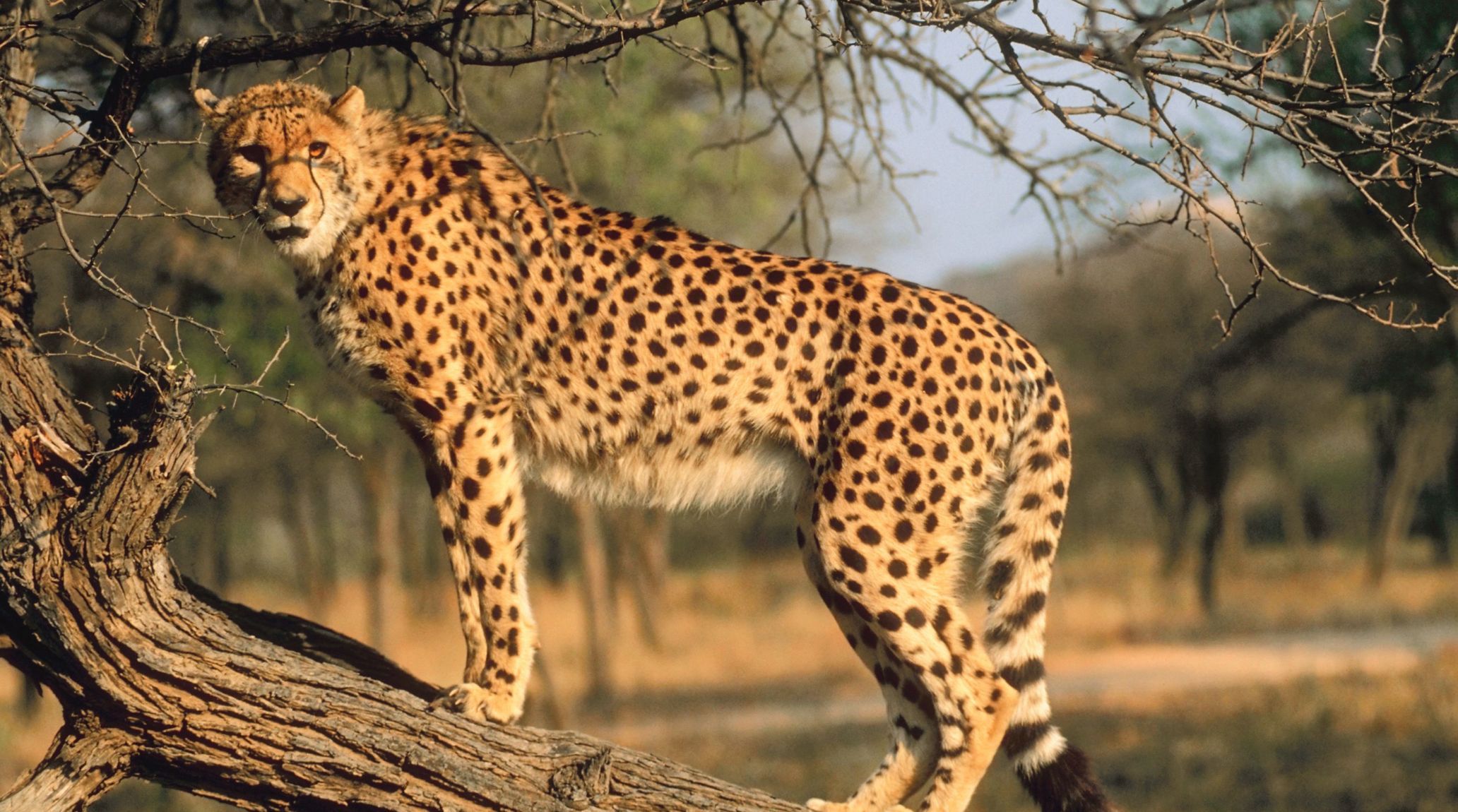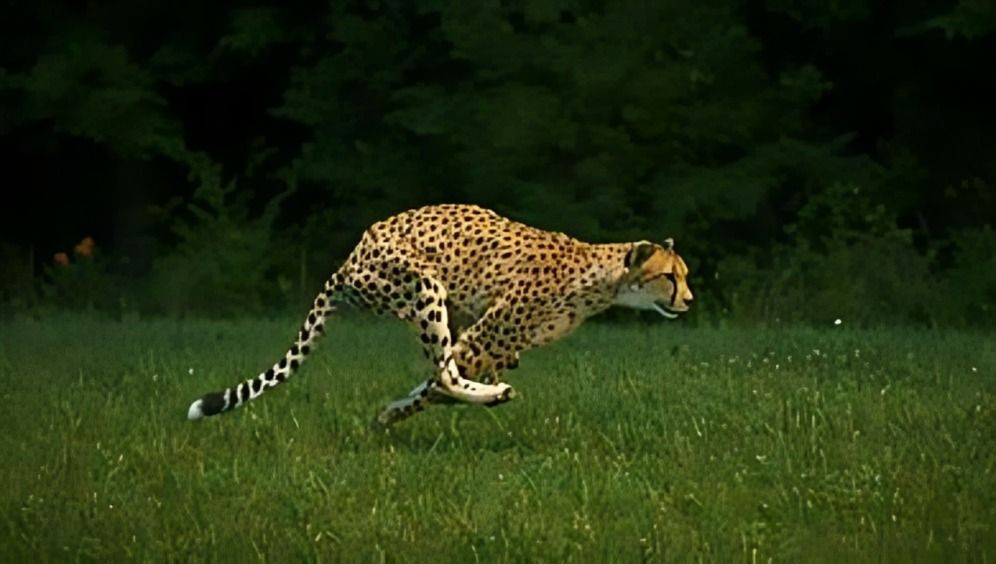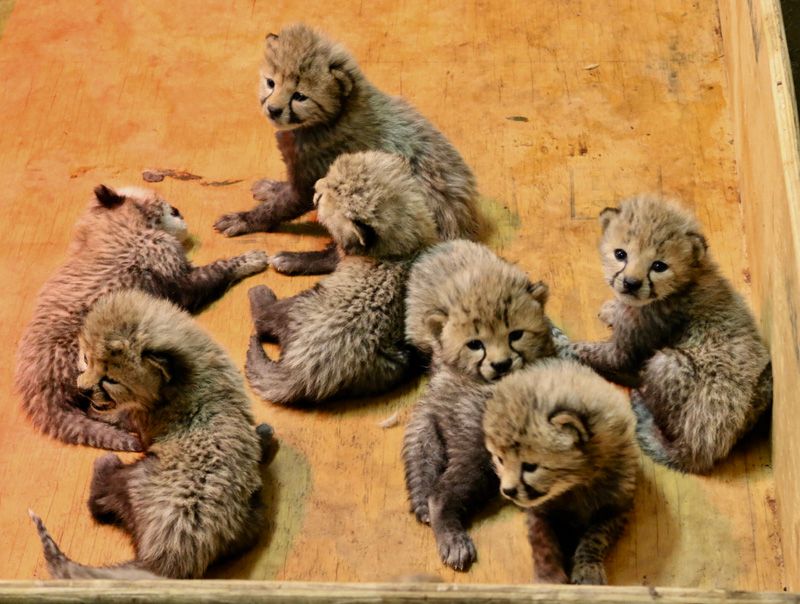
“
In this blog, we will uncover 20 intriguing facts about cheetahs, from their lightning-fast sprints to their unique adaptations for survival. Join us on this journey as we delve into the world of these magnificent big cats and discover what makes them truly extraordinary.1
1
”
Cheetahs are the fastest land animals, reaching speeds of up to 70 miles per hour in short bursts. This incredible speed makes them superb sprinters, allowing them to catch swift prey.1
Cheetahs primarily hunt during the day, using their exceptional eyesight to spot prey. They can see as far as 3 miles away in open terrain, making their vision a key asset in locating and pursuing their targets.2
Unlike other big cats, cheetahs can't roar but communicate through a variety of vocalizations. These sounds include purrs, growls, and chirps, each serving different purposes in their social interactions.3
Due to the high energy demands of sprinting, a cheetah chase typically lasts less than a minute and covers a distance of 200-300 meters. This burst of speed is essential for their hunting strategy.4
Cheetah cubs have a silvery mantle of fur along their backs, providing them with essential camouflage. This mantle helps the cubs blend into the tall grasses during their vulnerable early months, keeping them hidden from predators.5
Cubs stay with their mother for about 18 months, learning vital survival skills. During this period, they acquire essential hunting techniques and knowledge needed to fend for themselves once they become independent.6
Cheetahs have a gestation period of about 90 to 95 days, after which females typically give birth to a litter of 3 to 5 cubs. This period is crucial for the continuation of their species and the nurturing of the next generation of cheetahs.7

On June 20, 2012, Sarah, an 11-year-old cheetah, set a record by running 100 meters from a standing start in 5.95 seconds. The record was achieved on a certified course at the Cincinnati Zoo's Regional Cheetah Breeding Facility.
Cheetahs in the wild typically live 10 to 12 years, relying on their keen sense of hearing to detect prey and stay alert in the savannah. In captivity, where they are protected from predators, they can live up to 15 to 20 years. 8
Cheetahs have a specialized hunting strategy known as "stalk and chase." They use stealth to approach prey closely before unleashing bursts of speed, maximizing their chances of a successful hunt by catching their targets off guard.9
Their distinctive black "tear marks" reduce glare from the sun, helping them focus their vision on prey during intense pursuits. These marks are a key evolutionary adaptation that enhances their hunting efficiency in the bright African savannah.10
Cheetahs prefer quick, fresh meals and have adapted to drinking very little water. Their diet primarily consists of small to medium-sized prey, and they can go without drinking for extended periods, getting most of their moisture from their food.11
Whipsnade Zoo in Bedfordshire, UK, became the first zoo to breed and rear cheetahs successfully in September 1967. The resident cheetah pair, Juanita and Jack, produced three cubs named Jason, Jasmine, and Jacaranda.12
They are found primarily in Africa, with a small population in Iran, inhabiting a range of open savannahs and grasslands. These environments provide the space and resources needed for their high-speed hunting lifestyle.13
Unlike other big cats, cheetahs have a higher body temperature, which helps them cope with the heat generated during their rapid sprints. This adaptation is crucial for preventing overheating during intense physical exertions.14
Their tails serve as rudders, aiding balance and steering during high-speed chases. Tail also contributes to their remarkable agility and speed, allowing them to make sharp turns and maintain stability while pursuing prey.15

The largest captive cheetah litter, born on November 26, 2017, consisted of eight cubs, all reared by Bingwa at St. Louis Zoo's River’s Edge.
Cheetahs typically measure between 1.1 and 1.4 meters in body length, with tails ranging from 65 to 80 centimeters. Their weight varies from 34 to 54 kilograms, with males generally being slightly heavier than females.16
The cheetah (Acinonyx jubatus) is the fastest land mammal, reaching speeds of about 100 km/h (62 mph) for short distances. Research in 1965 recorded a top speed of 103.5 km/h (64.3 mph) over 201.2 meters.17
Female cheetahs are solitary except during mating season, focusing on raising their cubs. Males, on the other hand, often form small groups called coalitions for hunting and protection, which enhances their chances of survival in the wild.18


